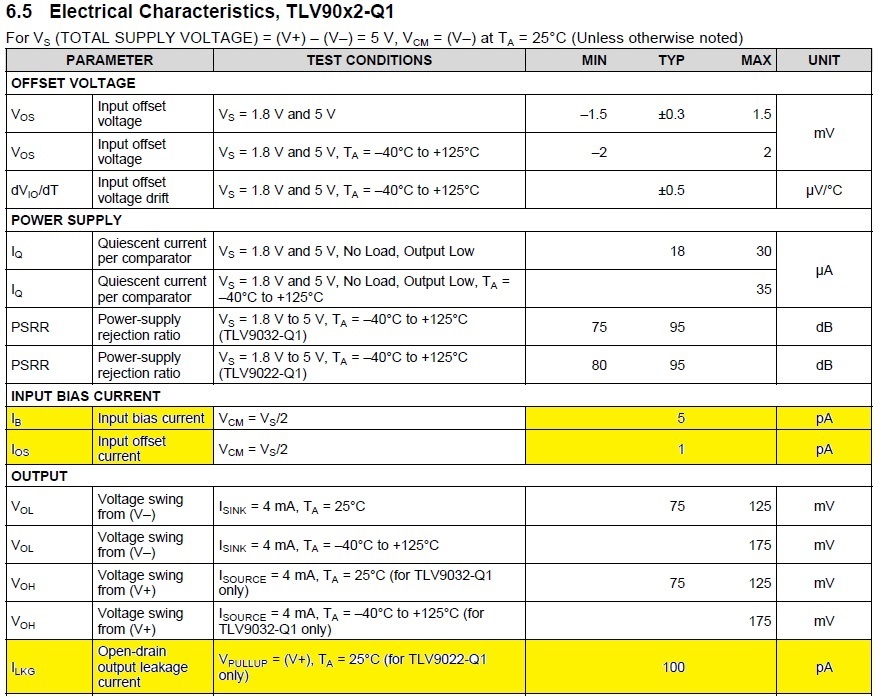hi Sir, may I know what is the absolute max guaranteed range for Input Offset Current, Input Bias Current, and Output Leakage Current (Open drain) across temperature -40C to 125C?
The numbers shown in the datasheet are meant for 25C only.
As this is an automotive part, please provide me the range across temperature -40C to 125C.
Is the range going to be derived from 6-sigma distribution?
Thanks
regards
Wilson.


